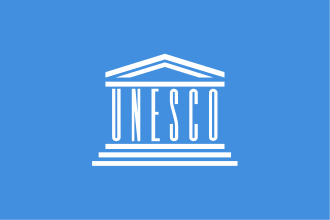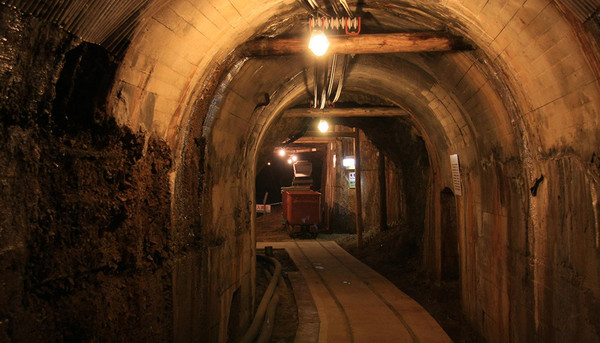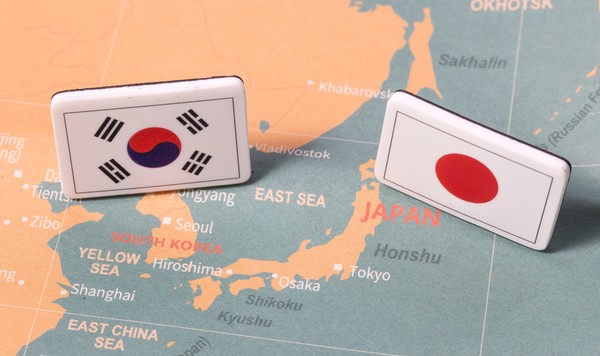On February 1st, the Japanese government submitted a recommendation to the UNESCO World Heritage Center to list the Sado Mine as a UNESCO World Heritage Site. If the Sado Mine passes the on-site inspection, evaluation, and approval of the World Heritage Committee the following year, it will be registered as a UNESCO World Heritage Site in 2023. However, the Sado Mine was a site of the forced labor of Koreans during the colonial rule of Korea (1910-1945). Foreign media such as Reuters and AP News are also paying attention to Japan's movement toward UNESCO despite the constant opposition from the Republic of Korea. What are the reasons and political backgrounds for Japan hoping to gain recognition from the world for Sado Mine, and will they be able to achieve their goals?

Background Information About Sado Mine
Exactly what is the Sado Mine? Sado Mine, located on Sado Island in Niigata Prefecture, is now being operated as a tourist spot after the mine was closed, but it was a famous gold mine during Japan’s Edo period (1603-1868). Accordingly, on January 28th, Prime Minister Kishida cited as the basis for recommending that the Sado mine is a valuable industrial heritage site that utilized traditional Japanese gold craftsmanship. Last December, Japsn’s Agency for Cultural Affairs selected the Sado Mine as a UNESCO World Heritage site recommendation for similar reasons. The agency said that Sado Mine established an independent manual gold production system and that the amount/quality of gold production was one of the best in the world at the time. In addition, The Sado Mine developed into a modern facility after the Meiji period (1868-1912) with the introduction of new machines. During the Pacific War (1941-1945), it was used as a supplier for war materials such as copper and iron.

Meanwhile, it has been proven that during the Pacific War, Japan forcibly mobilized thousands of Joseon people (former Koreans), who were then colonial subjects, to secure a workforce. On December 21st, the Japanese civic group published the contents of an official Japanese document. It was recorded that at least 1,141 Koreans worked in Sado Mine during the Japanese colonial period (1910-1945). In the document, it was also said "231,059¥ unpaid wages were deposited for 1,141 Koreans who worked in the Sado Mine." However, in November 1959, Japan incorporated the deposit money into the national treasury, citing that the prescription had expired. In other words, wages were not paid. In contrast, the summary of recommendations submitted to the Japan Agency for Cultural Affairs for domestic examination by Niigata Prefecture and Sado City, limited the evaluation period from the late 16th century to the late 19th century, excluding the Japanese colonial period. Due to these facts, Korea has consistently opposed the registration of the Sado Mine as a UNESCO World Heritage Site. The Japanese government is also aware of the sharp conflict between the two countries. According to Reuters on January 28th, Prime Minister Kishida said, “We're aware that South Korea has its own opinions on this issue. So that's why we feel we should have meaningful, rational debate and dialogue”. On January 29th, Japan publicly rejected South Korea's claim to stop recommending the Sado Mine to be listed as a UNESCO Site. As South Korea announced an all-around response right after, a diplomatic battle between the two countries is inevitable.
Abe Shinzo: Is He the Reason for Japan’s Decision Change?
In fact, Japan did not actively seek to register the Sado Mine as a UNESCO World Heritage Site from the beginning. On December 28th, the Agency for Cultural Affairs under the current Kishida regime selected Sado Mine as a candidate for recommendation as a UNESCO World Heritage Site. However, Japan withheld the recommendation this year for fear of backlash from the Korean government. Until January 20th, Japanese newspaper Yomiuri[1] reported that the government decided that the Sado Mine was not likely to be registered with UNESCO and it was planning to re-implement the registration after 2024. In addition, due to changes in UNESCO's system, even within Japan, they were skeptical of the promotion of Sado Mine. Last year, UNESCO changed the evaluation system. If there is a country objecting to the inscription, UNESCO stops the review, and the relevant countries must reach an agreement through dialogue. When the document about the Nanjing Massacre[2] by the Japanese military during the Sino-Japanese War was registered on the UNESCO Memory of the World in 2015, Japan protested and succeeded revising in the review system. Thanks to this change, Japan was able to prevent the inscription of documents about Korean sexual slavery victims for the Japanese imperial army on the UNESCO Memory of the World. However, with the situation reversed and facing opposition for this Sado Mine issue, Yomiuri reported “Japan has taken a reversed position this time and the recommendation of the Sado Mine in the midst of opposition from South Korea could damage Japan’s credibility in the international community,” However, on the 28th of January the ruling Japanese Liberal Democratic Party (LDP) made the opposite decision. Japan submitted a recommendation to UNESCO on February 1st, mentioning that starting discussions and the application early is the “shortest route” for inscription on the World Heritage list.

This shift seems to have been largely due to the influence of former Prime Minister Shinzo Abe. He resigned as prime minister in August 2020 due to worsening health conditions and now leads the largest faction within the Liberal Democratic Party (LDP) of Japan. Conservatives in the LDP led by former Prime Minister Abe, who contributed significantly to the inauguration of the Kishida regime in October last year, criticized the suspension of the Sado Mine recommendation. According to AP News, Shinzo Abe said, “It is wrong to not recommend it by avoiding a war of words. We should fight back with facts,” at a ruling party meeting held on January 20th. He also posted an article on his social media on the 27th stating that it is inevitable to go through a history war with Korea, so the recommendation should be enforced. Also, Abe's followers within the LDP have shown a different position from the Kishida government's choice by saying "It is a matter of Japan's honor" about the Sado Mine. Meanwhile, at a press conference after the official announcement on the 28th, Prime Minister Kishida mentioned that he had informed Abe and other officials of the recommendation decision in advance by phone while denying the suspicions that he had suddenly changed his policy. Also, Abe praised the decision and delivered a message to the media that he would continue cooperating with Kishida in the future, suggesting Abe’s continued influence in the Japanese government. Ultimately, Prime Minister Kishida made the choice to stabilize the regime in his country rather than to improve relations between Korea and Japan as there is an Upper House election in July this year.
UNESCO’s Strict Criteria for World Heritage: What Will Happen with the Sado Mine?

When selecting a World Heritage Site, UNESCO thoroughly reviews the Outstanding Universal Value (OUV) of the site. OUV refers to the value to be protected for the whole of humanity. However, not all heritage sites maintain OUV even after inscription, and there are cases of conflicts between countries due to political, religious, or historical interpretation. If it is judged that the OUV of a property that became the subject of conflict has been damaged compared to when it was inscribed on the World Heritage List, UNESCO takes direct action. Turkey’s Hagia Sophia is an example of this. The historic district in which Hagia Sophia, Turkey's representative building, is located, was listed in UNESCO in 1985 and has been loved by tourists from all over the world. However, the Turkish government converted the Hagia Sophia, which had been used as a public museum, into a mosque in 2019. As a result, the international community including the European Union (EU) protested that it was now a seed of religious division. In 2020, UNESCO announced that it would review the Hagia Sophia’s status as a World Heritage Site. In January 2022, UNESCO demanded the Turkish government to submit "an updated report on the state of conservation of the property". Furthermore, Liverpool Maritime Mercantile, England, which showed conflicts and damage to values due to continuous damage and redevelopment plans was permanently removed from the World Heritage List in July 2021.
Japan's Meiji Industrial Revolution is a similar case. This area includes Hashima, an island off Nagasaki, Japan, also known as Battleship Island. Along with the Sado Mine, it is a place where Koreans who were forcibly mobilized during the Pacific War suffered harsh labor and lost their lives in the coal mine. In 2015, when Meiji Industrial Revolution was designated as World Heritage, UNESCO set the prerequisite for Japan to acknowledge and properly inform the fact that forced labor was practiced in 7 of 23 sites of the Meiji Industrial Revolution. Thus, the Industrial Heritage Information Centre was established by Japan to inform the people of historical facts. However, it is located in Tokyo which is about 1200km from the Meiji Industrial Revolution. No exhibits commemorating the history of forced mobilization or victims were found while there was distorted information that Koreans lived in a comfortable environment. When the Korean Ministry of Foreign Affairs strongly criticized this, UNESCO formed a joint investigation team to inspect the center. After field inspections and online inspections, UNESCO concluded that the historical description was insufficient based on its 60-page report. Subsequently, UNESCO warned Japan, saying that it "strongly regrets" Japan's refusal to take follow-up measures to inform of past forced labor in the Meiji Industrial Revolution to the world. In addition, five mandatory clauses were added, such as referring to Germany's follow-up measures for forced labor during World War II, and dialogue with other countries. As such, it is focused on how UNESCO, which is taking direct action on heritage sites at the center of conflicts, will evaluate the controversial Sado Mine from the recommendation review stage.
Japan is currently making efforts to register the Sado Mine as a World Heritage Site. It is necessary to keep an eye on whether Japan will succeed in overcoming many obstacles such as its own regime, South Korea's backlash, and the strictness of UNESCO’s guidelines. In addition, continuous attention to how Japan faces its history that remains as objective records is essential. While Korea and Japan have already created tensions through several historical conflicts, excessive diplomatic warfare can have a negative impact on both countries. Therefore, we hope for an amicable agreement between the two countries and UNESCO‘s thoughtful decision.


